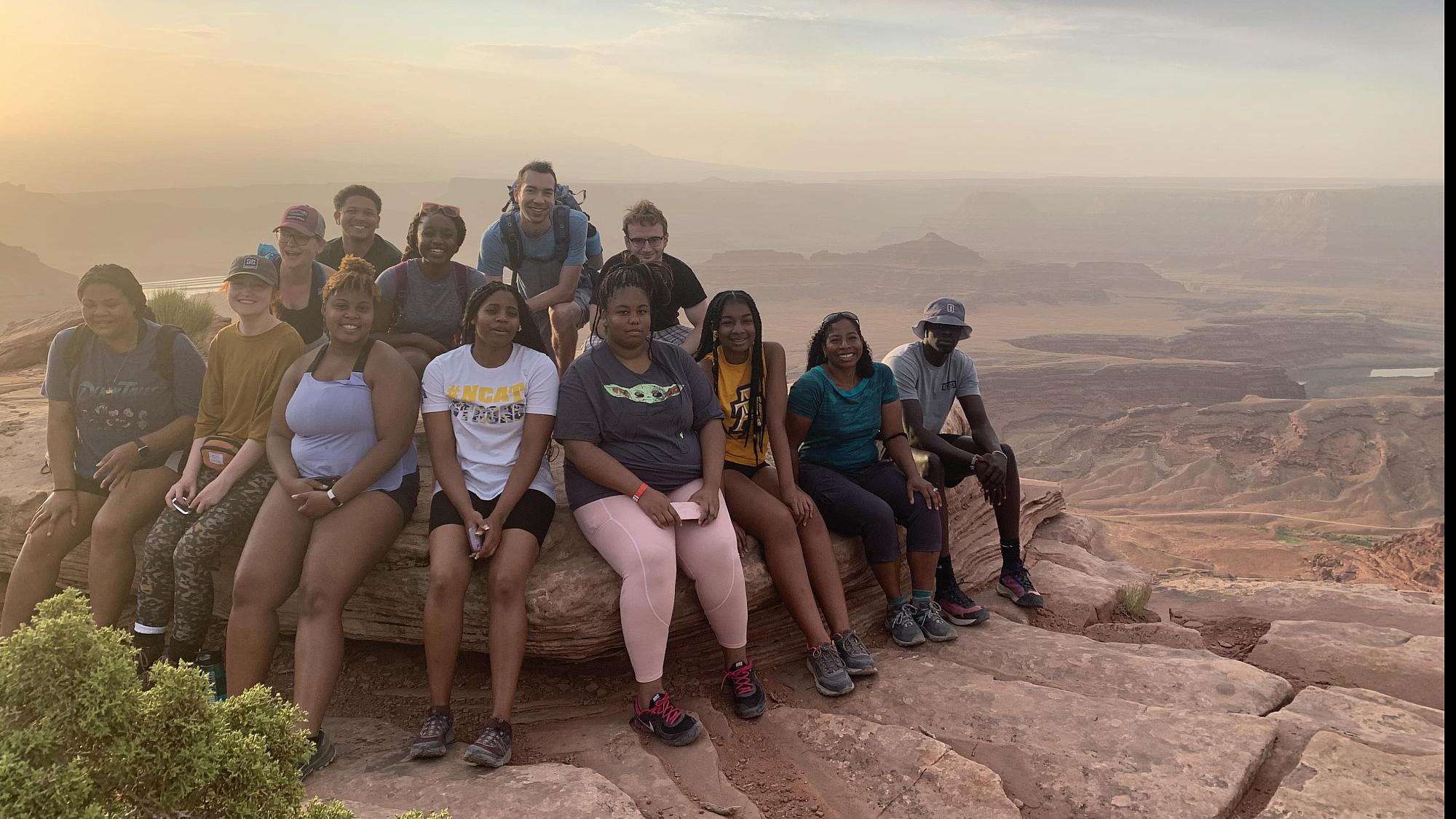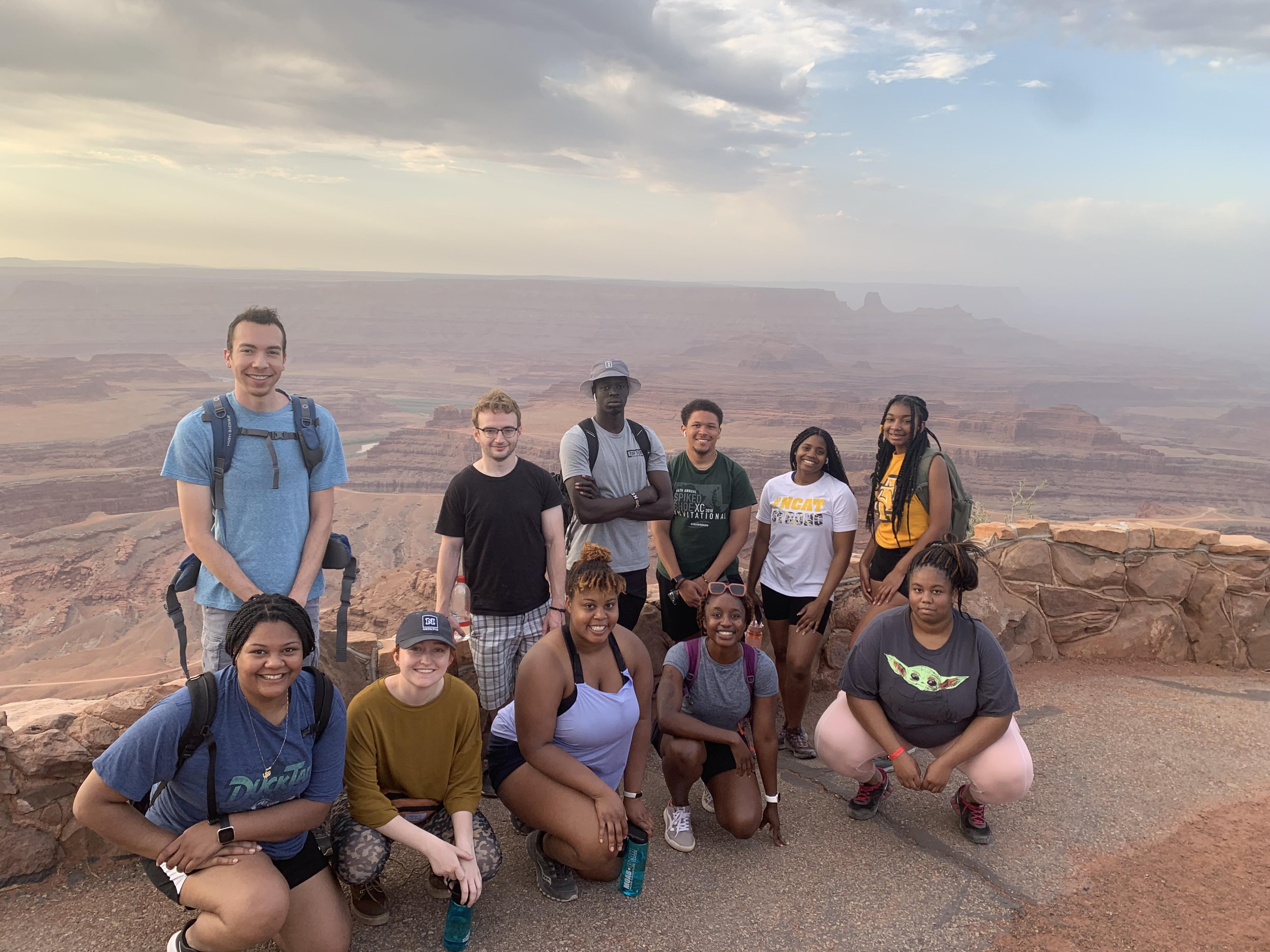

Pathology Integrated Scientific and Clinical Experience for Students (PISCES)
Online Application System
Applications Now OpenApplications are open for 2026 Cohort.
If your referee prefers a confidential letter, have them email it to pisces@path.utah.edu with the applicants name in the subject line.
The Pathology Integrated Scientific and Clinical Experience for Students (PISCES) program aims to provide medical students between their first and second years with an intensive 8-week research and clinical experience under the mentorship of a University of Utah faculty member. The program is a partnership with Meharry Medical College and other programswhich provides opportunities for students to develop a holistic mentoring relationship with a U of U faculty member, have a laboratory-based research experience in the field of immunology, microbiology, or cancer, and a related clinical shadowing experience in Anatomic or Clinical Pathology. E-mail Drs. Keke Fairfax, Kim Evason, and Allison Carey to apply or with questions: pisces@path.utah.edu
The 2024 program will run June 3rd-August 2nd with a stipend of $5,500.

Mentor Expectations:
- Provide a welcoming environment for the students
- Commit to developing a relationship with the student where mentoring will last past the summer, i.e. provide recommendation letters for residency applications, etc.
- Commit to getting to know the student and their background in order to provide mentoring based on the students
- Contribute to the development of critical scientific thinking skills

KEY DATES
December 1, 2025
Applications Open
January 12, 2026
Application Deadline
February 2, 2026
Selection and Notification of Awards
February 16, 2026
Student Commitment Deadline
June 1, 2026
Program Start Date
July 28, 2026
Program End Date

Participating Labs
Tantin Laboratory
Certain genes are silent but must be maintained in a readily activatable or “poised” configuration. Both stem cells and immune memory cells have large cohorts of such genes that must become induced in response to the correct cues. Example stem cell compartments include embryonic pluripotent stem cells, hematopoietic stem cells and normal and malignant stem cells of the GI tract. Our lab studies transcription regulators that mediate the gene poising process and are necessary for stem cell traits in these compartments.
Fairfax Laboratory
IL-4 and immuno-modulation are hallmarks of parasitic infections, my laboratory broadly focuses on using the helminth parasite Schistosoma mansoni as a tool to understand both, the consequences of IL-4 induced versus helminth antigen immuno-modulation, and the complex interplay between B, T and stromal cells necessary to develop an optimal T and B cell memory response Under this umbrella we currently have three main projects: 1) Understanding the immunological implications of maternal schistosomiasis; 2) Dissecting the role of IL-4 in shaping the cellular environment of peripheral lymph nodes during homeostasis and antigenic challenge; 3) Delineating the mechanistic role of hepatic macrophages in helminth-induced protection from metabolic diseases. The summer project will focus on schistosome egg antigen driven reprogramming of hematopoietic progenitors during high-fat diet induced metabolic disease, summer projects will incorporate, flow cytometry, single-cell RNASeq and multi-photon imaging.
Twitter: @LabFairfax
Evavold Laboratory
The focus of the Evavold lab is on immunology and specifically how the T cell subset responds to their antigen. We use a variety of immunologic and biophysical techniques to dissect how antigen dictates the fate of T cells. Understanding and ultimately control of T cell responses, would allow new therapies for autoimmune disease, cancer and optimization of immunity to infection.
Haecker Laboratory
The major focus of our lab is on innate immunity and inflammation, with projects ranging from molecular mechanisms of signal transduction to translational aspects of drug development.
In recent work, we identified a new protein, which controls signal transduction of Toll-like receptors (TLR), one of the major pathogen recognition systems. While TLRs are key to initiate immune responses and protect us from pathogens, extended or exaggerated TLR activation results in inflammatory diseases. As such, the control of TLR activity and its signal transduction pathways is critical for balanced immune responses. While we know that the mentioned new signaling protein controls one specific, major signaling pathway, the co-called ‘interferon-regulatory factor’ pathway, it remains unknown how various environmental stimuli that immune cells experience during immune response (e.g. cytokines) influence this pathway. This question will be the major focus of this summer project. It will involve training related to key concepts of innate immunology, as well as a various laboratory methods for analysis of gene regulation (e.g. quantitative PCR), signal transduction (e.g. immuno-blotting) and cell culture.
Williams Laboratory
Our lab focuses on mechanisms controlling the differentiation and activity of T cells responding to infectious pathogens and tumors. Visiting students will participate in projects aimed at monitoring T cell responses following infection with influenza virus in mice and evaluating therapies to enhance T cell activity in mouse models of melanoma.
Petrey Laboratory
The Petrey lab studies the intersection of coagulation and inflammation, two essential processes which reinforce each other and are thought to perpetuate inflammation in patients with Inflammatory Bowel Disease. Patients with Inflammatory Bowel Disease suffer from relentless destruction of the gastrointestinal tract driven by an over-aggressive immune response. Disease manifestations also include significant bleeding into intestinal tissues and venous thromboembolism, which is a significant cause of mortality and clinical challenge. Projects include a combination of human, and animal, and cell-based studies aimed at investigating the how platelets, cells primarily known for blood clotting, interact with immune cells and vascular surfaces to participate in the inflammatory response.
Jared Johnson Laboratory
To defend against infection, our innate immune system needs to “sense” the invading pathogen, sound the alarm signals, and then engage a protective response to fight the threat. My lab studies how our innate immune system detects and responds to HIV using a combination of classic virology/cell biology and functional genomics approaches. We ask questions such as: How is HIV-1 recognized during infection? What factors are required for the innate immune response? And how do cells tune responses once they are engaged? PISCES summer projects will incorporate multiple laboratory techniques and provide exposure to molecular biology, cell culture, protein biochemistry, and flow cytometry. Trainees will design and clone CRISPR-Cas constructs to target candidate host factors, use their constructs to knock out these factors in human cells, and then test the impact on virus infection and the innate immune response.
Lo Laboratory
Therapies based on engineered T cells have emerged as promising avenues for the treatment of autoimmune diseases and cancers, but most engineered T cells cannot fully mimic the function of natural T cells. My lab is interested in understanding the signals that regulate the activation of T cell immune responses. We examine whether a few key proteins involved in normal T cell activation can be altered to close the functional gap between natural and engineered T cells. The summer project will involve sequence engineering of T cell phosphosites to fine-tune the T cell activation threshold and results from this study will identify new design features that could improve T cell-based therapies.
Planelles Laboratory
The Planelles lab focuses on several aspects of the HIV biology. We are interested in the functions of accessory genes and, more specifically on their roles in immune evasion. We are also interested in the ability of HIV to establish latent infections, which go undetected by the immune system and prevent viral eradication. HIV establishes latency via a complex collaboration of viral and cellular functions resulting in transcriptional suppression. This transcriptional suppression is reversible, and leads to viral rebound when treatment is discontinued in patients. Understanding immune evasion and transcriptional regulation will be key toward designing effective therapies against HIV.
Carey Laboratory
My lab’s research focus is pathogenic mycobacteria, including the causative agent of tuberculosis, Mycobacterium tuberculosis, and non-tuberculous mycobacteria. Our goal is to understand how bacterial strain diversity impacts clinically relevant phenotypes including antibiotic resistance, virulence, and vaccine escape. We utilize a combination of high-throughput forward genetic tools, bacterial population genomics, and in vitro and in vivo models to address these questions. This summer project will involve whole genome sequencing a clinical isolate of the lung pathogen Mycobacterium avium and computational analysis of gene content and markers of antibiotic resistance.
Roy Laboratory
B cells rapidly proliferate and differentiate into plasma cells and memory B cells after encountering pathogen or foreign antigen. The Roy lab is interested to understand the regulatory mechanism of B cells’ fate to plasma cells and memory B cells and harness the knowledge to develop vaccination strategies in infectious diseases. Our immediate goal is to understand how the transcription factor, NFkB, regulates the generation of plasma cells and memory B cells.
Evason Laboratory
Liver cancer (hepatocellular carcinoma, HCC) is the third leading cause of cancer-related death worldwide. Tragically, the majority of patients with HCC present with disease that is too advanced to benefit from potentially curative treatments such as surgical resection or ablation. The overarching goal of the Evason laboratory is to define mechanisms involved in liver tumorigenesis in order to develop improved therapies to treat this deadly cancer. Summer students in the Evason laboratory will work with our zebrafish HCC models to test drugs and identify genetic manipulations that affect liver tumorigenesis.
Mimche Laboratory
The mission of the Mimche laboratory research program is to perform innovative and cutting-edge research aimed at deciphering the biological processes that promote pathological tissue inflammation and fibrosis. Human fibrotic diseases are a major socioeconomic burden on modern societies and account for up to 45% of deaths in the developed world. My group is currently focused on elucidating the role of the axonal guidance cue Eph/Ephrin system in tissue inflammation and fibrogenesis across various organs including the liver, skin, lung, heart, and kidney. To achieve this goal, we utilize cutting edge molecular biology techniques, genetic manipulation of mice, animal modeling of disease, and translational studies in humans. Our ultimate goal is to develop therapy targeting this cell signaling system for the treatment of fibrotic diseases.
Snyder Laboratory
The Snyder lab’s overall mission to understand how the loss of cellular identity and acquisition of alternative differentiation states contributes to cancer progression and alters therapeutic response. We focus specifically on lung and pancreatic cancer, two types of cancer for which new therapies are urgently needed. Summer students in the Snyder lab will work with a variety of cancer models, including genetically engineered mice and three-dimensional organoid cultures, to tackle basic and translational questions in lung and pancreatic cancer.
Grossmann Laboratory
Melanoma is a deadly form of skin cancer common in adults and that also occurs children. The laboratory of Allie Grossmann investigates how this cancer grows, avoids attack by the immune system and spreads to distant sites within the body. We use human melanoma cells and murine models of melanoma to discover new vulnerabilities in this cancer and test unique therapeutic combinations that may be effective in treating this disease, both in early and advanced stages.
ARUP Clinical Chemistry- Johnson-Davis Laboratory
I am a trained clinical chemist and my role is to oversee clinical toxicology lab testing at ARUP Laboratories. There are four laboratories that are utilized to perform testing for drug screening and confirmation testing, therapeutic drug monitoring, neonatal drug testing and trace and toxic elements at ARUP. Testing methods include automated immunoassays, ELISA, Gas chromatography flame ionization, Gas chromatography mass spectrometry, Liquid chromatography tandem mass spectrometry and Inductively coupled plasma mass spectrometry (ICP-MS). At the completion of the rotation, it is expected that a basic understanding of testing, best specimens for testing, timing of specimen collection, analytical challenges, and interpretation of results will be gained. Research opportunities may include retrospective data analysis or to evaluate assay interference.
ARUP Cytogenetics and Genomics Lab
ARUP Cytogenetics and genomic microarray lab performs microarray, chromosome and FISH analyses to uncover the cytogenetic aberrations for both constitutional and cancer diagnoses. Patients with indications such as developmental delay, autism, recurrent fetal loss, and multiple congenital anomalies have the option of tests ranging from classic karyotype analysis, FISH studies for specific microdeletion/microduplication syndromes, or microarray for genome wide analysis. The molecular Genetics Department at ARUP provides a comprehensive testing options to assist physicians in the diagnosis of patients with inherited genetic disorders. Summer students in the laboratory genetics will have opportunities to work on clinical research project, do lab observation, participate in clinical case conference/meetings/journal clubs, work with LGG fellows and shadowing medical directors.




